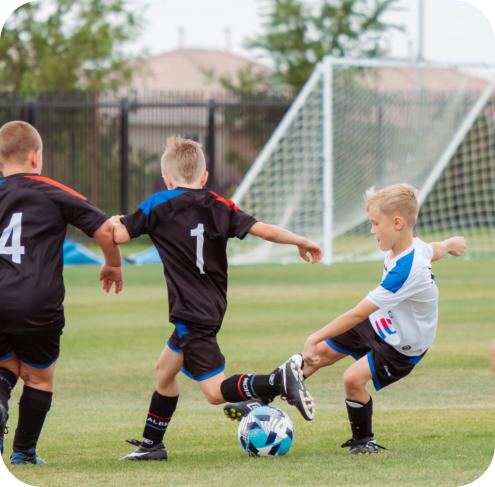ON-SITE
AFTER HOURS
ORTHOPEDIC




COPYRIGHT © MURPHY WAINER ORTHOPEDIC SPECIALISTS
ALL RIGHTS RESERVED.
WEB DEVELOPMENT BY A BETTER WEB, INC.
Sports Physicals at
Murphy Wainer
WHAT IS A SPORTS PHYSICAL?
A sports physical exam is also known as a
preparticipation physical examination (PPE). The exam
helps determine whether it's safe for your child to
participate in a particular sport. The North Carolina
High School Athletic Association requires annual
sports physicals for all participating students. But even
if a PPE isn't required for your child, physicians still
highly recommend getting one. You should plan to have
your physical about 6 weeks before the season begins
for your child's sport so there's enough time to follow
up on something, if necessary.
WHAT’S INVOLVED?
A sports physical consists of two parts: medical history
and a physical exam. The medical history questionnaire is
filled out by the parent and includes information about
family medical history and the student's past illnesses or
injuries. It's important to answer the questions as well as
you can. Try not to guess or to give answers you think
your doctor wants.
The physical exam includes checking the child's height
and weight, and blood pressure and pulse. The doctor
will also evaluate posture, joints, strength, and flexibility,
and test the child's vision. The physician may also ask
questions about the child’s health habits.
At the end of your exam, the doctor will either fill out and
sign the form if everything checks out OK. In some cases,
he or she may recommend a follow-up exam, additional
tests, or treatment for medical issues.

WHEN TO GET A SPORTS PHYSICAL
A sports physical is important to help you discover and deal with
any health issues that might interfere with your child's
participation in a sport. The physician can identify risk factors
that are linked to specific sports and make recommendations that
could help your child avoid injuries.
Getting a sports physical once a year is usually adequate. You
should also get checked out after healing from a major injury
before you start practicing or playing again.
ON-SITE
AFTER HOURS
ORTHOPEDIC



COPYRIGHT ©
MURPHY WAINER ORTHOPEDIC SPECIALISTS
ALL RIGHTS RESERVED.
WEB DEVELOPMENT BY A BETTER WEB, INC.
Sports Physicals at
Murphy Wainer
WHAT IS A
SPORTS
PHYSICAL?
A sports physical exam is
also known as a
preparticipation physical
examination (PPE). The
exam helps determine
whether it's safe for your
child to participate in a
particular sport. The North
Carolina High School
Athletic Association requires
annual sports physicals for all participating students.
But even if a PPE isn't required for your child,
physicians still highly recommend getting one. You
should plan to have your physical about 6 weeks before
the season begins for your child's sport so there's
enough time to follow up on something, if necessary.
WHAT’S INVOLVED?
A sports physical consists of two parts: medical history
and a physical exam. The medical history questionnaire
is filled out by the parent and includes information
about family medical history and the student's past
illnesses or injuries. It's important to answer the
questions as well as you can. Try not to guess or to give
answers you think your doctor wants.
The physical exam includes checking the child's height
and weight, and blood pressure and pulse. The doctor
will also evaluate posture, joints, strength, and
flexibility, and test the child's vision. The physician may
also ask questions about the child’s health habits.
At the end of your exam, the doctor will either fill out
and sign the form if everything checks out OK. In some
cases, he or she may recommend a follow-up exam,
additional tests, or treatment for medical issues.
WHEN TO GET A SPORTS PHYSICAL
A sports physical is important to help you discover and
deal with any health issues that might interfere with
your child's participation in a sport. The physician can
identify risk factors that are linked to specific sports
and make recommendations that could help your child
avoid injuries.
Getting a sports physical once a year is usually
adequate. You should also get checked out after healing
from a major injury before you start practicing or
playing again.

A Division of Southeastern
Orthopaedic Specialists, P.A.





- MAP & DIRECTIONS
- APPOINTMENTS & FORMS
- INSURANCE & FEES
- PAY BILL ONLINE (opens new tab)
- REQUEST APPOINTMENT (opens new tab)
- REQUEST MEDICAL RECORDS
- REFILLS & QUESTIONS
- PHYSICAL THERAPY
- ORTHOPEDIC URGENT CARE
- ACCESSIBILITY STATEMENT
- NON-DISCRIMINATION NOTICE (opens new tab)
- PRIVACY NOTICE (opens new tab)



































